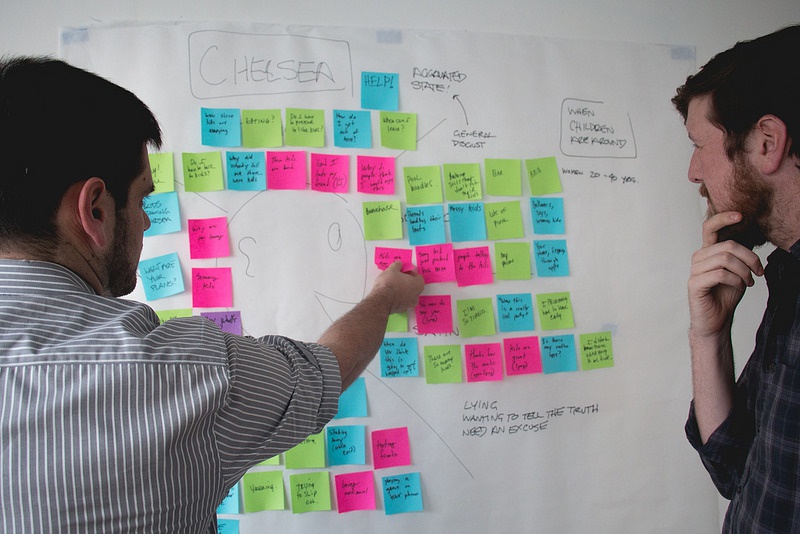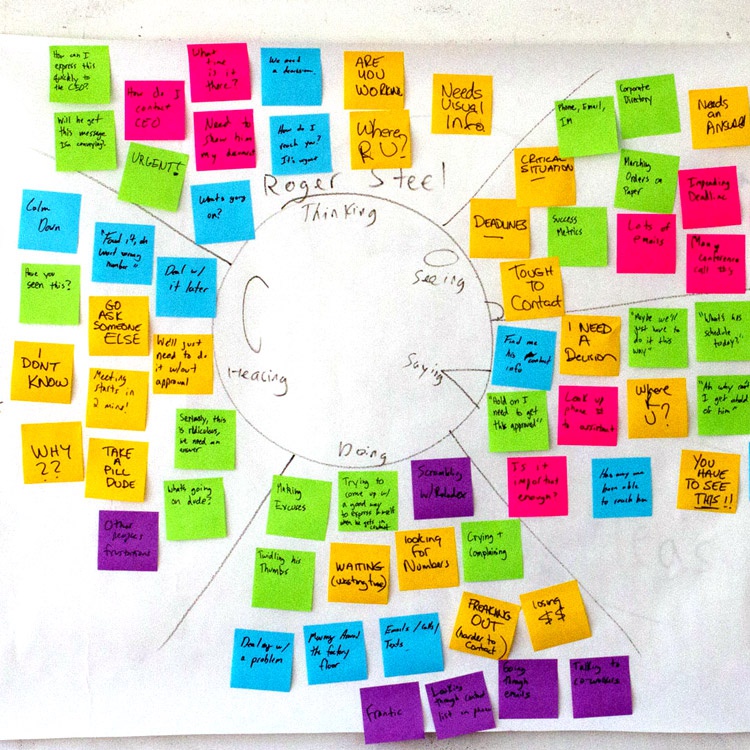
No matter how innovative or delightful a product is, it's useless without users. Unless the entire team understands how and why users might want the app, it won't get much traction among its audience.

One of the very first things we do as part of our Product Design Process is ask clients to work with us to create an empathy map. For us, empathy mapping is key to understanding the problem we're working to solve, and it begins with learning what we don't know about our clients and our customers.
The empathy map is an important conception-stage exercise because it helps challenge our assumptions about a product's ideal users. This is true for both the client's understanding of an ideal user as well as our own. One example where an empathy map proved to be an invaluable tool was when we worked with a client in the world of influencer marketing. The client wanted to build an app for social media influencers; the things that they would promote often saw huge spikes in engagement.

While the client had a very clear idea of the target audience for the app, we did not. As soon as this became obvious we ran an empathy mapping exercise to get on the same level. After completing the empathy map exercise, our team walked away with newfound knowledge of how these unfamiliar users think and work. In this respect, the empathy map's purpose is twofold: It helps clients uncover their raw, uninhibited perspective, and it gives us greater direction and better framing of the problem we are trying to solve.
The empathy map exercise begins with an introduction of its purpose, clearly stating that we are trying to uncover particular areas that we may need to focus on. The whole process will usually take between 30 and 40 minutes. Empathy mapping is a highly collaborative process and requires the participation of all key stakeholders. Most clients immediately recognize its value and will even photograph the empathy map as a reminder on the way out.

We use lots of sticky notes and large butcher paper for the exercise. The first step involves drawing an abstract head (representing “the ideal user”) with eyes, ears, and a mouth. Next to each section of the head are written words that correspond to each sensory experience (brain = thinking, eyes = seeing, mouth = saying, body = doing, ears = hearing). Next, we create a familiar identity for the user. The client will usually come up with a name while thinking about a real person. We give this “ideal user” context for the situation. For instance, we might say, “Sandra is a yoga instructor at the gym; she is in line at the grocery store and realizes she forgot to pick up something on her list.” Setting the right context for the situation is very important, since it tries to identify a common use case when someone may think about using the product.
The exercise's facilitator then asks the group what she might be experiencing in that situation, starting with thinking and going clockwise around the head. We give participants a few minutes to jot down ideas on sticky notes for each section. Sometimes the sticky notes will be full sentences, other times they are single words. After a few minutes is up, the facilitator reads each sticky note aloud as they are placed around the user. This is a good time to ask for clarification if any of them are unclear or ambiguous. Once all the stickies for a section are put up, the facilitator tries to find a common theme tying them together and will ask the group to come up with a few words summarizing the section. This process helps both us and the client identify gaps in understanding of the product's ideal user.

After all of the sections are completed we discuss the finished empathy map. It's easy to see areas where there weren't many stickies, or areas that had differing opinions. These sections are the ones that stick out and should be considered for further investigation. Once the empathy map is completed we keep it visible on the wall, ensuring we can refer back to it throughout the remainder of our discovery workshop. As we familiarize ourselves with the problem our client is trying to solve, the map serves as a “home base” we can constantly come back to as a way of checking our understanding. See this gamestorming link for step-by-step instructions on how to conduct your own empathy map exercise.
At Yeti, the empathy map is an invaluable exploratory tool. The exercise helps us delve deep into the minds of stakeholders to discover ideas which would never have otherwise surfaced. Just like a building's foundation, the empathy map creates a bedrock of understanding between our team and clients upon which great partnerships — and great products — are built.